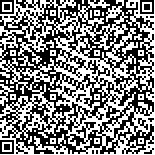| This article has been:Browse 1433Times Download 2147Times |

scan it! |
|
|
| DOI:10.13522/j.cnki.ggps.2019280 |
|
| Using Hyperspectral Imagery to Estimate Soil Moisture and Calculate Evapotranspiration from Coastal Saline Soil |
|
ZHANG Xiaoguang, KONG Fanchang
|
|
1. College of Resources and Environment, Qingdao Agricultural University, Qingdao 266109, China;2. State Key Laboratory of Soil and Sustainable Agriculture, Nanjing 210008, China
|
| Abstract: |
| 【Objective】Soil moisture is a key factor mediating water and salt movement in soil. Monitoring soil moisture dynamics is hence critical to ameliorating soil salinity and safeguarding crop production, especially in coastal areas. The purpose of this paper is to test the feasibility of using spectral imaging techniques to estimate soil water content.【Method】The field experiment was conducted at a coastal saline soil in the Yellow River delta. Water with different solute concentrations was applied to the soil first, and we then measured its effect on water evaporation. The spectral imageries of the soil under different water content and salt content were acquired using a surface hyperspectral remote sensing apparatus. Eighteen spectral transformations were used to process the spectral data, and the partial least square regression (PLSR) model between soil moisture content and the spectral data was derived for each transformation. 【Result】Among all transformations, the models based on smoothing+normalization spectral transformation (contained normalization of variables, range normalization, maximum normalization, and area normalization) gave good results. The model based on smoothing + normalization of variables was most accurate with R2=0.713 1 and RMSE=0.095; its ratio of standard deviation to root mean square error (RPD) was 1.823 7, indicating that this model can be directly used to inversely estimate soil moisture of the saline soil. While different combinations can be constructed from the spectral transformations, the combination derived from post-transformation of the smoothing+ normalization of variables+ multiplicative scatter correction model worked best, with R2=0.866 1, RMSE=0.866 1 and RPD=2.764 3. The models derived from other combinations of the spectral transformation were less accurate, indicating that care needs to be taken in selecting the suitable spectral transformation to estimate soil moisture. 【Conclusion】The model presented in this paper was stable and accurate, and its soil moisture estimates can be used to calculate soil evaporation at a wide range of circumstances. The spectral imaging technique can thus be used to real-time monitor soil moisture change in saline soils in coastal areas. |
| Key words: soil moisture; hyperspectral imagery; spectral transformation; coastal saline soil; artificial simulation |
|
|